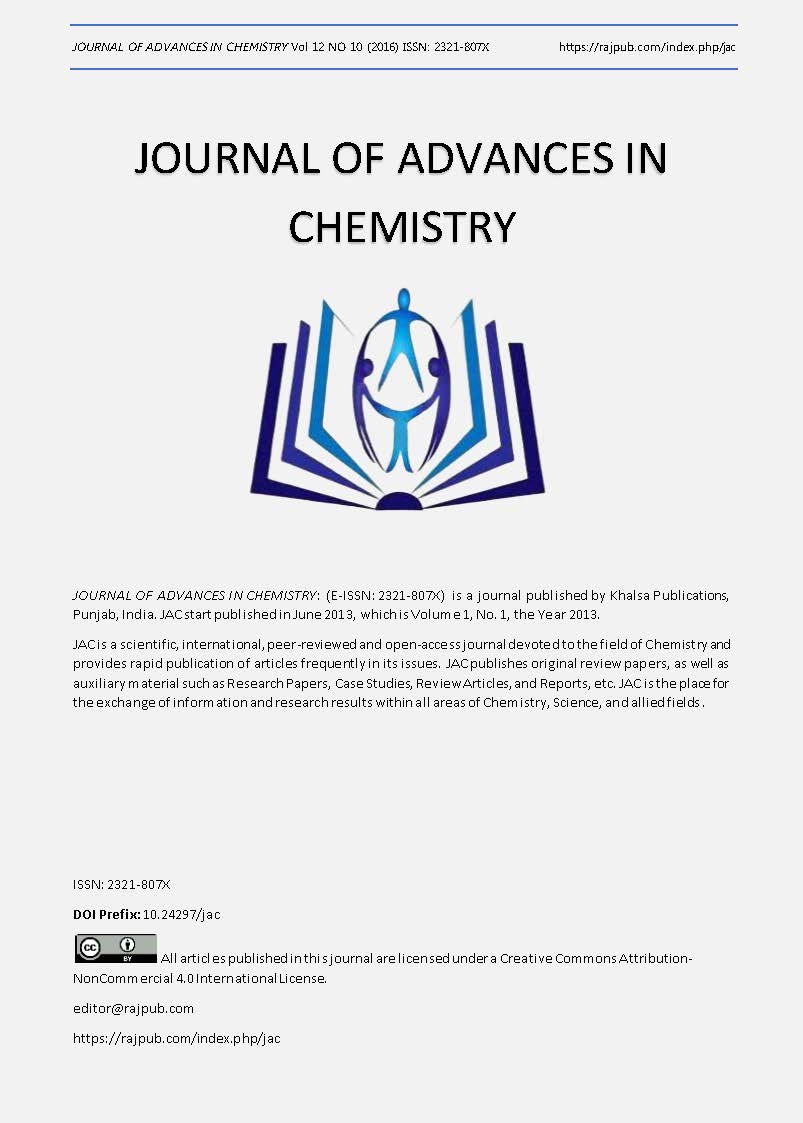Acid Attack on Concrete Containing Industrial Wastes
DOI:
https://doi.org/10.24297/jac.v12i10.5421Keywords:
CopperSlag, GGBS, Metakaolin, Concrete, Acid Attack, Sulphuric Acid, Hydro Chloric AcidAbstract
In this paper, the acid attack test is conducted on M30 grade concrete with industrial wastes. Here in this study, GGBS
and metakaolin are partially replaced for cement and copper slag is replaced for sand. The simultaneous replacement of
these materials is done in each mix. Totally five mixes were prepared including controlmix. GGBS and metakaolin
replacement vary from 5% to10% in successive mixes. Similarly the copper slag replacement ranges from 20 to 40%. Two
types of acids such as Sulphuric Acid, Hydro chloric Acid with 1%concentration are used at 28 days immersion. From the
results, it is observed that the percentage loss of weight is least for the mix containing 5% GGBS, 5% Metakaolin and 20%
copper slag. And also for the same mix, the compressive strength of 28 dayssulphuric acid curing is11.07% higher than
the concrete with 28 days water curing. Similarly in hydro chloric acid immersion, the compressive strength of concrete is
2.24% higher than the concrete with 28 days water curing. The reason for the acid resistance of concrete is the combined
effect of GGBS, Metakaolin and copper slag.
Downloads
References
Properties Of Concrete And Its Sulphuric Acid Resistance.Journal of Engineering Sciences. 43, 183-199.
2. Beulah,M.,Prahallada, M.C. 2012. Effect Of Replacement Of Cement By Metakalion On The Properties Of High
Performance Concrete Subjected To Hydrochloric Acid Attack. International Journal of Engineering Research
and Applications. 2, 033-038.
3. ViswanadhaVarma,D., Rama Rao, G. V. 2014. Effect Of Replacement Of Cement By Metakaolin On The
Properties Of High Performance Concrete Subjected To Acid Attack. International Journal of Civil, Structural,
Environmental and Infrastructure EngineeringResearch and Development. 4, 63-72.
4. VijayaSarathy,R.,Dhinakaran, G. 2013.Strength and durability characteristics of GGBFS based HPC. Asian
journal of applied sciences, 1-8.
5. Kanniyappan,S.P.,Tamilarasan,B.,Sivakumar,M. 2016. A Study On Durability Properties Of Self-Compacting
Concrete Using GGBS.International Journal of Modern Trends in Engineering and Research. 3, 587-593.
6. Swaroop, A.H.L.,Venkateswararao, K.,Kodandaramarao,P. 2013. Durability Studies On Concrete With Fly Ash
&Ggbsâ€, International Journal of Engineering Research and Applications. 3, 285-289.
7. TehminaAyub., NasirShafiq., SadaqatUllah Khan. 2013. Durability of Concrete with Different MineralAdmixtures:
A Review.International Journal of Civil, Environmental, Structural, Construction and Architectural Engineering. 7,
601-612.
8. Santosh Kumar Karri., Rama Rao,G.V.,MarkandeyaRaju,P. 2015. Strength and Durability Studies on GGBS
Concrete.SSRG International Journal of Civil Engineering. 2, 34-41.
9. AhceneMerida., FattoumKharchi. 2015. Pozzolan concrete durability on sulphate attack. Procedia Engineering.
114, 832 – 837.
10. Girardi,F.,Vaona,W., Di Maggio,R. 2010. Resistance of different types of concretes to cyclic sulfuric acidand
sodium sulfate attack. Cement & Concrete Composites. 32, 595–602.
11. Zhen-TianChanga.,Xiu-Jiang Songa., Robert Munna., MartonMarosszeky. 2005. Using limestone aggregates and
different cements for enhancing resistanceof concrete to sulphuric acid attack. Cement and Concrete Research.
35, 1486 – 1494.
12. JayapalNaganur., Chethan,B. A. 2014.Effect of Copper Slag as a Partial Replacement of FineAggregate on the
Properties of Cement Concrete. International Journal of Research. 1, 882-893.
13. BinayaPatnaik., SeshadriSekhar,T., SrinivasaRao.2015.Strength And Durability Properties Of Copper Slag
Admixed Concrete. International Journal Of Research In Engineering And Technology. 4, 158-166.
14. Brindha,D.,Baskaran, T., Nagan, S. 2010.Assessment of Corrosion and Durability Characteristics of CopperSlag
Admixed Concrete.International Journal Of Civil And Structural Engineering. 1, 192-211.
15. Jitin Jacob., Jenson Jos. 2016. Experimental Investigation on Strength and Durability Aspects ofConcrete using
Copper Slag and Phosphogypsum. International Journal of Research in Engineering Technology. 1, 33-42.
16. IS: 10262: 2009.Concrete Mix Proportioning – Guidelines. Bureau of Indian Standards. New Delhi. India.
17. IS: 12269: 1987. Ordinary Portland Cement, 53 Grade — Specification.Bureau of Indian Standards. New Delhi.
India.
18. IS: 383: 1978. Specification for Coarse and Fine Aggregates from Natural Sources for Concrete. Bureau of
Indian Standards. New Delhi. India.
Downloads
Published
How to Cite
Issue
Section
License
 All articles published in Journal of Advances in Linguistics are licensed under a Creative Commons Attribution 4.0 International License.
All articles published in Journal of Advances in Linguistics are licensed under a Creative Commons Attribution 4.0 International License.




